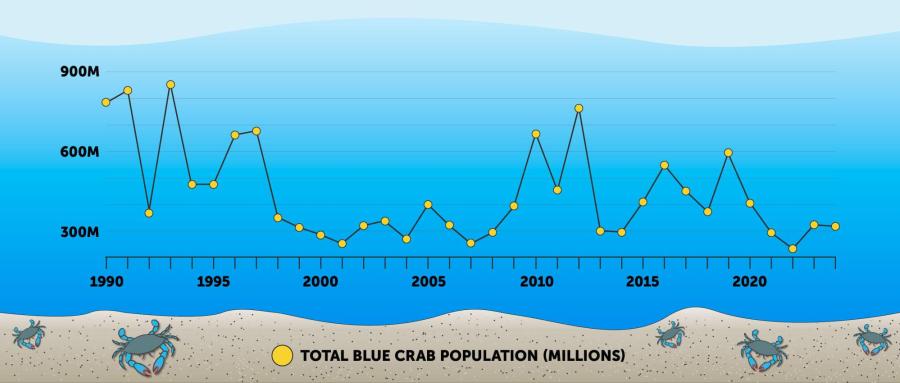Blue Crabs
The Bay’s signature crustacean supports important commercial and recreational fisheries. But pollution, habitat loss and harvest pressures threaten blue crab abundance.

Show image description
The infographic shows an underwater scene with blue crabs resting on the sand. A line chart shows years from 1990 to 2024 on the X-axis and millions of blue crabs on the Y-axis, from 200 million to 900 million. It begins in 1990 just under 800 million, then rises to slightly before dropping all the way to under 400 million in 1992 and jumping to about 850 million the next year. From there, it drops to below 500 million and remains about the same before increasing to above 650 million in 1996. It increases slightly before falling to about 350 million in 1998. From there, it continues dropping slightly to a low of around 250 million in 2001 before rising slightly to over 300 million in 2002 and 2003. It drops back a little, below 300 million, before rising to 400 million in 2005. The next two years show a steady decline to around 250 million, then a gradual rise over three years to nearly 700 million in 2010. 2011 shows a drop to around 450 million and then jump to over 750 million in 2012. Then it drops to 300 million in 2013 and 2014 before growing to about 550 million in 2016 and decreasing to under 400 million in 2018. The last height blue crab population reaches is about 600 million in 2019, before dropping through 2022, where the low is just above 200 million. But the last two data points, in 2023 and 2024, show growth, at above 300 million.
